 Bhikkhu Cintita Dinsmore Bhikkhu Cintita Dinsmore
We talk to Bhikkhu Cintita Dinsomre, a Buddhist monk, to understand how an academic in the US came to discover Buddhism and finally to make an important change in his life to become a monk.
You can find out
more about Bhikkhu Cintita Dinsmore though these links:
bhikkhucintita.wordpress.com
www.statesman.com
Now to our questions:
1) Tell us about your life before you discovered Buddhism.
2) How did you discover Buddhism?
3) How and why did you decide to become a monk?
4) How did your friends and people who do not know about Buddhism react?
5) How is it like to be a Buddhist and a monk in a strongly Christian country?
6) What activities do you spend your time doing and how is the local Buddhist community?
Tell us about your life before you discovered Buddhism.
I grew up in a non-religious middle-class family in the San Francisco Bay Area in California, USA. It is an area with quite a lot of Asian cultural influence, where East meets West. Today it is a major center for Western Buddhism. Although I grew up with a positive impression of Eastern religion and of meditation, I was never curious enough to learn about it while I lived near San Francisco.
I had an academic and technology career, was married, had three children, then divorced. My children are all grown now. I actually decided to learn meditation shortly after earning a Ph.D., and not finding employment, while I was living in Germany on a post-doctoral fellowship. I was going through a stressful period, having trouble sleeping, and thought meditation would help me relax, which it more than did. Later I became a professor, then still later worked in a corporate environment, doing research and development in Artificial Intelligence.
My work brought me to Austin, Texas in 1995, at the age of 45.
back to top
How did you discover Buddhism?
When I was in my 40's I realized that I had little wisdom concerning how I should live my life. I had experienced successes and failures in my work and earnings, and in relations with other people. I enjoyed my work, which was intellectual and creative, and being a father was very meaningful. But I had a sense of dissatisfaction, even in the successes.
I always felt something was missing. I also began thinking about moral choices; I recognized ways I had hurt people in my life without meaning to, but realized I should have known better. I recognized also that my job was directly or indirectly being funded by, and for the benefit of, the American Department of Defense, as is virtually all high-tech research and development in America, and I was a pacifist who had opposed every American war in my adult life.
I began thinking, "someone must have written a manual on how to live life for people like me." Then it occurred to me: "That is what religion is for!"
As I said, my family was not religious, so I really had not thought about it much before. So the next step was what any intellectual, scientist or scholar would do: Read about it. I read about Christianity, Islam, Hinduism and Buddhism, oh, and Native American Religion. I was in the very fortunate position that I could do so completely objectively, without bias. For me, Buddhism stood out from the pack.
I found Buddhism so rational: "This is the human dilemma, and this is what we do about it." The more I read, the deeper it went. I saw that it had a very sophisticated understanding of the human mind and how to work with the human mind. I recognized that it sets an extremely high goal for its followers---it aims at no less than the perfection of the human character--- and then provides a technology, a course of training in conduct, in emotive thinking and in conceptual understanding of the world that, with enough effort, is capable of bringing that goal to attainment. Wow. What I discovered is something many thinking people in the West have discovered before me. Many European and American philosophers having learned about Buddhism beginning in the Nineteenth Century and continuing to the present, have been amazed not only by the sophistication of Buddhist thought, but by its modernity. It is significant that Buddhism has grown among Westerners primarily among the intellectuals, the highly educated. So, I fit right in with a much wider trend.
About thirteen years ago I decided to embark on the Buddhist path, and in fact the Zen Buddhist path. I began studying Buddhism in Austin rather intensely, and started sitting with two different Zen meditation groups. I was already a meditator, but Buddhism added whole new dimensions to this practice. I began reading about one book a week on Buddhism. I created a very early Web site called "Zen in Austin" to promote the four Zen groups, and they all began to grow. One of these, due to the efforts of its founder, grew very rapidly and finally became the Austin Zen Center, a full-fledged Buddhist temple, with an ordained and highly certified Zen teacher imported from San Francisco, and for which I was a founding member. Between my demanding high-tech job, and my Buddhist practice, studies and service, my time was stretched pretty thin. Whenever I had a vacation from work I would attend a seven-day Zen meditation retreat.
back to top
How and why did you decide to become a monk?
This happened in stages. Around 2000 high-tech companies began to fail because of over-valued stock prices. I lost my job at a company that was going under in 2000, found another job, only lose it for similar reasons in 2001. At that point I reevaluated my life: I was much more interested in my Buddhist activities than in my career, I still had doubts about the morality of the work I was doing, my kids were starting to move out on their own and were actually fairly financially secure because wealthy grandparents on their mother's side had made provisions for them.
I decided to retire from my career, sell my house and devote myself full-time to Buddhism. I moved into the Austin Zen Center, then at the end of the year moved to Tassajara Zen Monastery in California. I lived there for about one and a half years, returned to Austin in 2003, ordained as a Zen priest and took up residence at the Austin Zen Center. I lived there for six years, teaching, organizing retreats and other events, maintaining our very old but beautiful building, developing the library, teaching in prisons, providing pastoral care, engaging in interfaith dialog, and so on.
There are certain aspects of my character that always inclined me toward the monastic life. I have always been somewhat of an introvert. Even as a child I cherished solitude and serenity. I have never been drawn to wealth. I had enjoyed some reputation in my life, but realized that there was no satisfaction in that. I recognized that the path of renunciation was the high road in the Buddhism that had become the center of my life, and I now understood why.
Through my continued reading and practice, and through frequent visits to other Buddhist temples, including Chinese, Vietnamese, Burmese, Sri Lankan and Thai, I began to recognize the critical importance of the monastic tradition as the cord in the mala, that holds Buddhism together, and has always held it together in every land in which Buddhism has thrived. To further my monastic aspirations, I decided to reordain in a strong Vinaya tradition.
I had become over a few years an infrequent visitor to a Burmese monastery in Austin. When in 2008 I announced my decision to the abbot that I intended to reordain, he immediately offered to do so. "But," he said, "if you wait until early 2009 I am traveling to Burma. I think it would be good for you to ordain in Burma." That is exactly what happened. I was ordained March 10, Full Moon Day, 2009, by Sitagu Sayadaw, aka, Ven. Nyanissara, with 80 monks in attendance at a newly consecrated huge convocation hall in Sagaing Hills, then lived in Burma for another year before returning to the USA March, 2010.
back to top
How did your friends and people who do not know about Buddhism react?
Buddhism has become quite popular in America. Although the number of Buddhists is still quite small, and is still represented probably 50% by people of Asian decent, people in general think of Buddhism in positive terms. The Dalai Lama is the most popular world religious leader in America; I think he might be the most popular celebrity in general.
However, most people have never seen a real live Buddhist monk. My family has never thought there was anything odd in my choices, but they are San Franciscans. (Interestingly my sister converted to Catholicism, and they think that was a very odd thing to do.) When I walk in public with my monk's robes I am very exotic indeed; grown ups tend to be less expressive of this, while their children's eyes get real big. Some people think I am a Hindu swami or a Hare Krishna.
back to top
How is it like to be a Buddhist and a monk in a strongly Christian country?
Most Americans do not understand Buddhism, but it seems harmless to most people, perhaps because of its record of peace, and people see the Dalai Lama on T.V. and find him lovable and wise. Hollywood has been particularly kind to Buddhism; in fact many actors, writers and directors in Hollywood are Buddhists, in fact many of the most creative people in America in almost all areas are Buddhists: Steve Jobs, CEO of Apple Computers; Philip Glass, a foremost classical composer; Alice Walker, a foremost novelist; and so on.
On the other hand, many people with certain strong religious views have no reserve about attacking Buddhism along with almost every other religion as "satanic." I have had no uncomfortable personal encounters with people of other religious faiths, but I have taught Buddhism in prison in Texas for many years, and I know many of the Buddhist inmates suffer a lot of hostility from other prisoners.
I have actually had very many positive encounters with people of other faiths, particularly when I was active in an Interfaith group as a Zen priest. There is a strong movement in America to improve inter-religious understanding, which I fully endorse. I know many Christians, Muslims and Jews who are very spiritually mature. A recent news story can illustrate these two sides of American religion. A Cambodian Buddhist temple in Minnesota was repeated vandalized by a group of Christians, who spray-painted slogans like "Jesus Saves," on their driveway, broke into their mailbox and so on. The police could not find who was doing this. However, a Christian church in the same town felt ashamed that this was happening, so they set up a volunteer team to go out to the Buddhist temple to repair the damages, and more, even working in the garden. That is the Christianity that inspires.
Somehow monasticism is something many Americans grasp quite readily. Many non-Buddhists want to give monks and nuns things. Some Buddhist monks and nuns doing alms rounds in America, generally with publicity beforehand, discover very good responses. I know a Zen monk (ordained as I was as a priest, but who chooses to live more like a monk than most monks) who is almost constantly on pilgrimage, walking from town to town, generally with other Buddhists who join him for segments of his wanderings, wearing full robes, carrying no money or food. Because few people understand the tradition of alms rounds he generally stops at a church when he enters a new town, explains what he is doing, and is generally very well taken care of, especially (!) in the Bible Belt. He described an instructive incident in which his little group was driven from the only church in a little town by the minister, who called them "satanists." The group had no other options for food, so decided to camp in a little park, go hungry for the day, and hope for better luck in the next town on the next day. As they were setting up in the park they saw a car approach. Out popped the minister, who gave them a box of sandwiches then quickly drove away. This is how you bring out the best in other people's religions.
back to top
What activities do you spend your time doing and how is the local Buddhist community?
Since I have returned to the USA from Burma I have been living in Burmese monasteries in Austin and in Minnesota; in a sense I have not really returned since I've been the only American monk in predominantly Burmese immigrant communities. Of course the Burmese are very devout Buddhists and I receive the best care and respect. I have helped them with some business matters, including applying for a grant. I have also started a Buddhist program for Burmese kids on Sunday mornings. The Burmese children generally speak English better than Burmese and do not feel a part of the Buddhist services conducted in Burmese.
I have also started a meditation and discussion group to attract Westerners to the monastery, and given some talks for Westerners at other venues. I spent a couple of nights at a Catholic monastery, where I was invited by a couple of monks who have an interest in Buddhism. The Catholic monks live a lot like we Buddhist monks do. I made a trip to New York State where I visited Bhikkhu Bodhi, perhaps the most famous American-born monk. I was in charge of training nine temporary Burmese monks who lived at the monastery for the week they were in robes. Mostly I study, I write and I meditate. In November 10, I will attend the Sixteenth Annual Conference for Western Buddhist Monastics in California. I am quite happy and hope to see Buddhism thrive here in America; we need it.
back to top
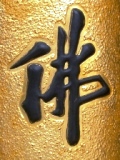
|

Bhikkhu Cintita Dinsmore

Meditating at Sagaing, Sitagu International
Buddhist Academy, Burma
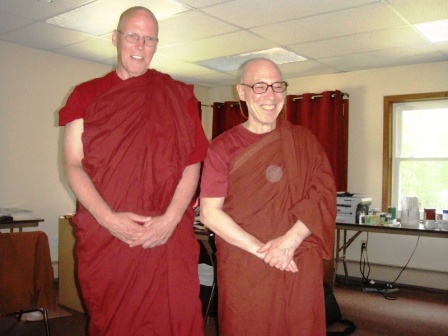
Bhikkhu Cintita Dinsmore and Bhikkhu Bodhi

Bhikkhu Cintita Dinsmore visiting Benadictine monks
at St. John's Abbey.
Photo with Father William and Brother Aaron.
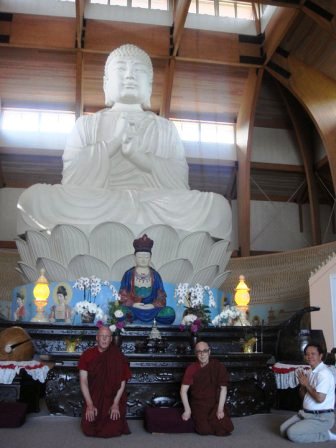
At the Chuang Yen Monastery, Carmel, NY.
Bhikkhu Cintita Dinsmore, Bikkhu Bodhi, and U Aung Koe

U Sucitta, U Jitamaro, Bhikkhu Cintita Dinsmore
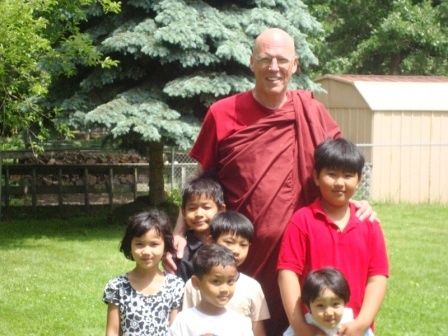
Bhikkhu Cintita Dinsmore with Burmese kids in Minnesota
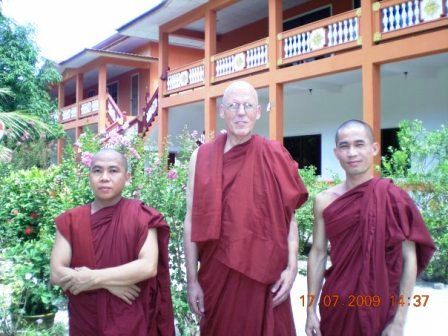
Venerables Vepulla (Burma), Cintita (USA) and Jitamaro (Laos) at Sitagu International Buddhist Academy (SIBA) in Sagaing Hills, Burma
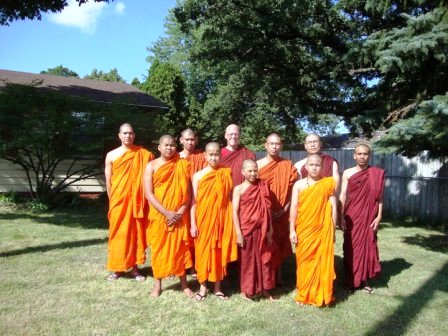
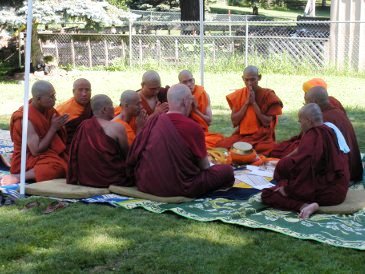
Ordination for of five temporary Burmese-American monks
Ordained by a sangha of six monks including
Bhikkhu Cintita Dinsmore
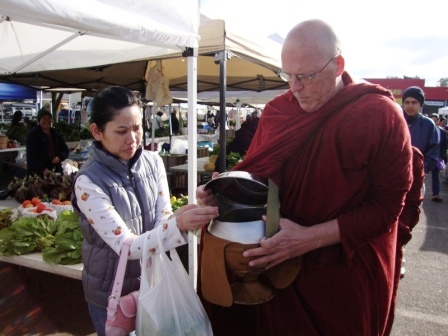
Alms round is in a farmers' market, Minnesota

Alms round is in a farmers' market, Minnesota

Entrance to SIBA Convocation Center, Myanmar

A picture with Bhante Gunaratana, author of
"Mindfulness in Plain English."
He is now about 81 years old, sharp as a tack. Ven. Ariyadhamma, abbot of the Sitagu Buddhist Vihara
in Austin is on the left.

Wall Street New York
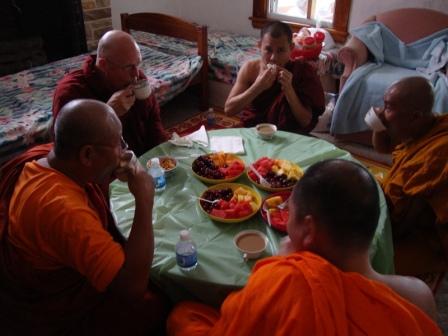
Bhikkhu Cintita Dinsmore having a
meal with Karen monks
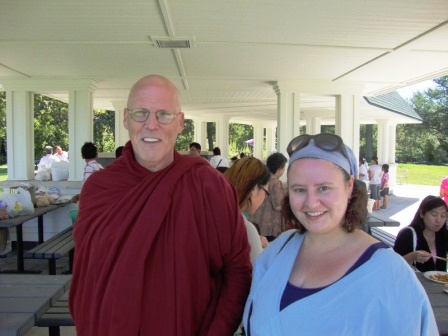
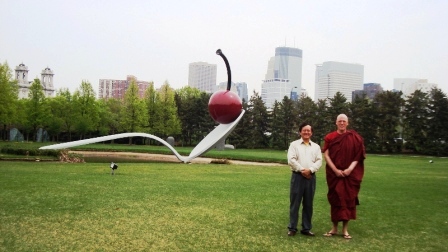
Bhikkhu Cintita Dinsmore with Kappyia in Minnesota
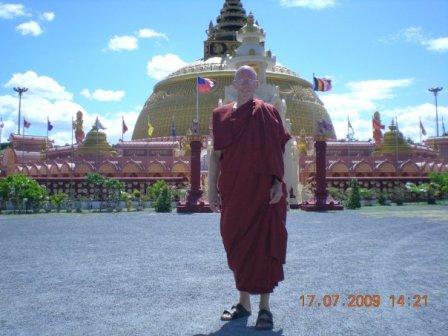
Bhikkhu Cintita Dinsmore at the SIBA Convocation Center
|


 USA
USA

















